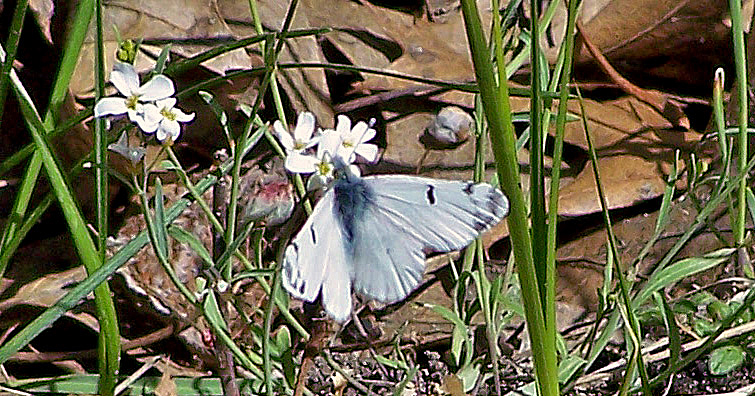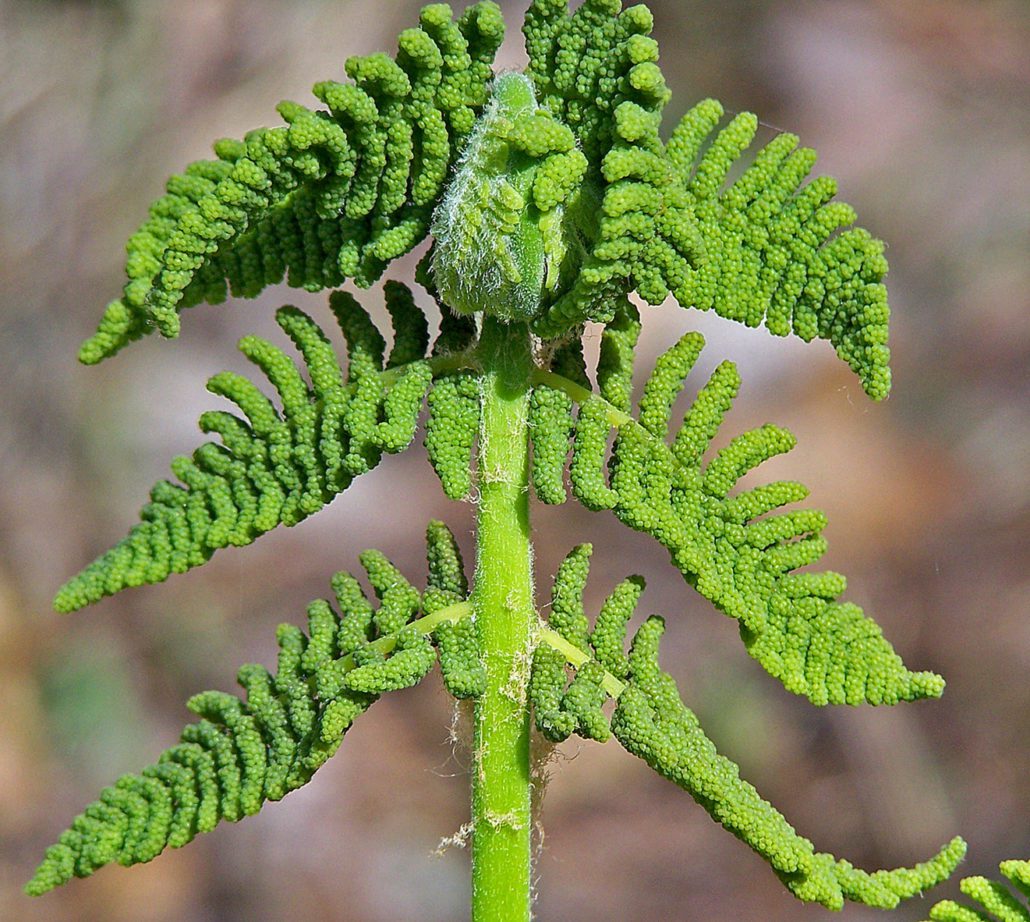
Olympia Marble Butterfly
Howdy, BugFans,
The BugLady met this butterfly on a trip to the Necedah National Wildlife Refuge one fine, spring day when the bird’s foot violets were in bloom and the interrupted fern fiddleheads were unfurling. She thought it was a bit too small (and early) to be a standard Cabbage White butterfly, and the picture languished in the X-Files until recently. In retrospect, it’s not often that she thinks “Darn – I wish that butterfly would close its wings” as she’s taking its picture, but on an Olympia Marble, all the action is on the underwing https://bugguide.net/node/view/1491979/bgimage. She’ll just have to find another one.

The Olympia Marble (Euchloe olympia), aka Olympian Marble and Olympia Marblewing, is in the family Pieridae (the Whites, Sulphurs, and Yellows). It’s found in a wedge-shaped patch of ground in the middle of North America, plus some disjunct populations in the Appalachians and Texas https://www.butterfliesandmoths.org/species/Euchloe-olympia, and it’s the easternmost of the seven North American Marbles (Wisconsin and Michigan have the greatest numbers of the species). Within its range, it is local and uncommon; according to The Butterflies of Iowa, “populations are often small; only single individuals are observed at a given time. This, in combination with the emergence of this species before most other species, has led Loess Hills lepidopterist Tim Orwig to call it ‘our loneliest butterfly.’” It’s a habitat specialist – look for it in dry meadows and knolls, barrens, open woodlands, sand prairies, dunes, and (today’s vocabulary word) “alvars.”
[Scenic Side Trip #1 – alvars and alvar pavement grasslands. Alvar comes from a Swedish word that refers to barrens and grasslands growing on very thin soils over limestone or dolomite bedrock. Sometimes there’s no soil covering the rock at all, and plants grow in deposits of organic material caught in fissures (“grikes”). Alvars may have floods in spring and droughts by mid-summer. They’re an uncommon plant community – many kinds of alvars are globally imperiled – and they’re found most commonly in the Baltic region of northern Europe, counties Clare and Galway in northwest Ireland, and around the Great Lakes (one Wisconsin alvar is protected as a State Natural Area). Mosses, lichens, grasses, and sedges are common; the sparse woody vegetation is often stunted; and these unique plant communities often host rare plant and animal species. Here are some pictures: https://mnfi.anr.msu.edu/communities/photos/10702/alvar].
Olympia Marbles are just a shade smaller than the very common Cabbage Whites, and individuals that live on Great Lakes coastal dunes are slightly smaller than those inland. When newly-emerged, they wear a rosy pink wash on the undersides of the wings https://bugguide.net/node/view/9417/bgimage, and when they sit on a plant and close their wings, they tend to disappear https://bugguide.net/node/view/1786977/bgimage. The more-heavily-marbled Large Marble https://bugguide.net/node/view/47032/bgimage lives north and west of Wisconsin.
These are weak, but direct, flyers that stay pretty close to the ground and have a short flight period. Males patrol on hilltops in May, flying back and forth purposefully just above the ground. What do dry meadows and knolls, barrens, open woodlands, sand prairies, dunes, and alvars have in common? Rock cress (formerly Arabis/now Boechera spp.) – straggly, low-growing members of the mustard family (click on any picture for a slide show https://www.illinoiswildflowers.info/woodland/plants/sm_rockcress.htm). Females lay single eggs on a flower bud; the young caterpillars eat the flowers and seed pods, and the older caterpillars https://bugguide.net/node/view/52515/bgimage feed on the fruit, leaves, and stems. Apparently, the Whites – members of the subfamily Pierinae – have a habit of nectaring on the same species that host their young, but adults also feed at phlox, lupine, chickweed, and wild strawberry flowers, and several others.
By the end of June, the show is pretty much over. Caterpillars turn a purplish color when they’re about to form a chrysalis, and the fresh chrysalis is also rosy, too, but it turns brown in fall so it’s camouflaged through the winter https://bugguide.net/node/view/54866/bgimage. They spend 11 months as an inconspicuous chrysalis attached to a host plant, emerging in May (one source said that under certain circumstances, they might remain in the chrysalis for three years). There’s a single generation per year.
Early butterflies need strategies for warming up in the cool temperatures of mid-spring. Olympia Marbles expose the sides and the upper surfaces of their wings to the sun (lateral and dorsal basking) – a passive way of collecting the sun’s warmth in order to heat the thorax so they can fly. Some insects add “muscular thermogenesis” – quivering muscles within the thorax to raise its internal temperature – but Olympia Marbles don’t have that in their bag of tricks.
How can we make the world a better place for these butterflies? Preserve favorable habitat with plenty of host plants. They are susceptible to pesticides used to control gypsy moths and to prescribed burns. Because they are such specialists, it doesn’t take much habitat destruction to wipe out a small, local population.
[Scenic Side Trip #2 – Gypsy moths. After much discussion within the Entomological Society of America, 50 scientists voted recently on a new name for the Gypsy moth, because the former name was considered offensive to the Romani. From more than 200 suggestions they picked the “Spongy moth,” a reference to its sponge-like egg cases. The French were way ahead of us – the moth is already called “spongieuse” in France and in parts of Canada. The BugLady is all for not insulting people, but seriously – the best they could do is Spongy moth??? Next up – the Japanese beetle, because some feel that the strong language used by some pest control businesses can cross the line into the xenophobic.]
Kate Redmond, The BugLady
Bug of the Week archives:
http://uwm.edu/field-station/category/bug-of-the-week/
